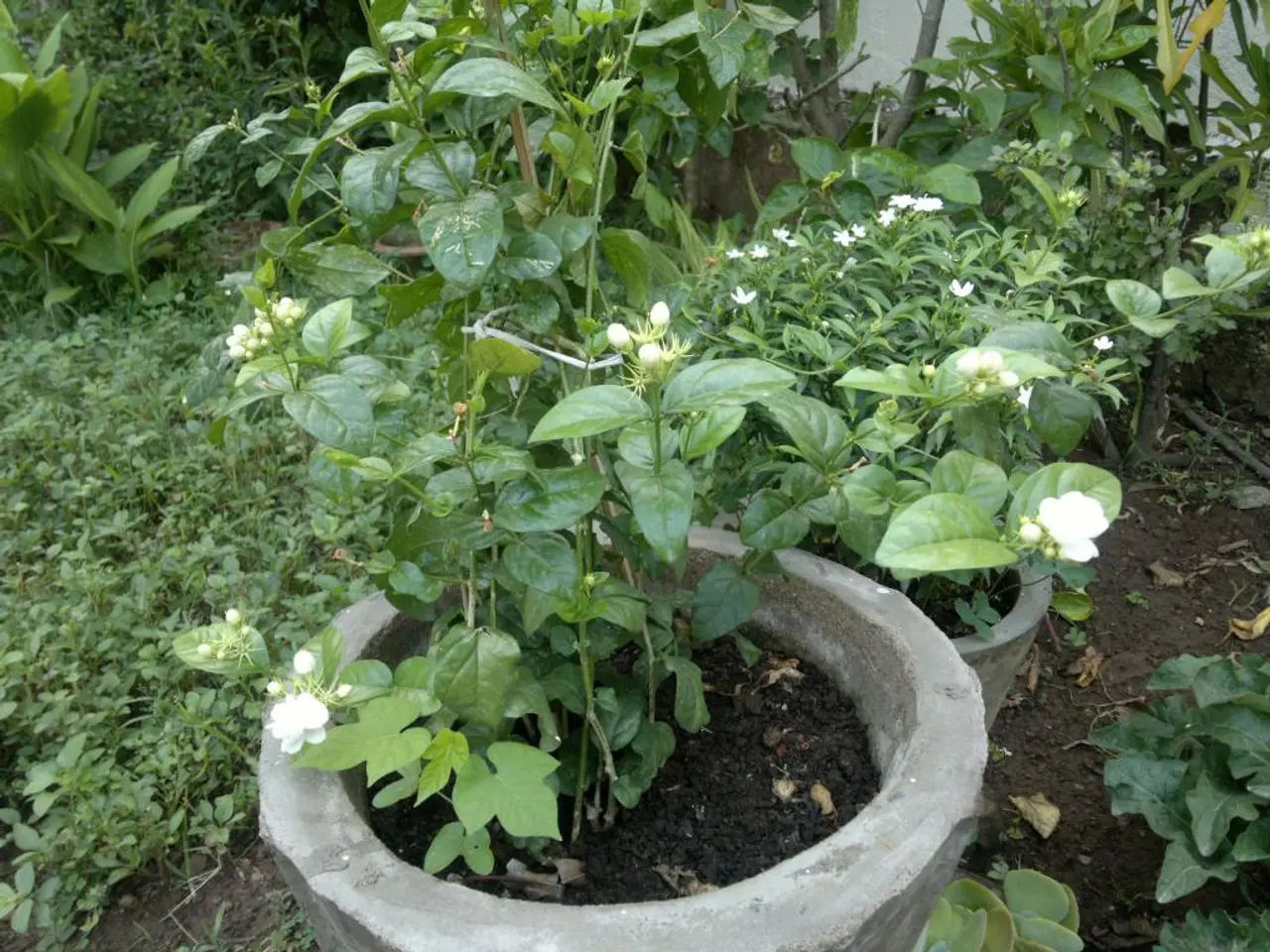Create Your Own Peat-Free Potting Mix: Formulate Homemade Nutrient-Rich Mixtures for Plants
## Peat-Free Potting Mixes: Sustainable and Effective Alternatives for Gardeners
In a bid to reduce environmental impact, gardeners are increasingly turning to peat-free alternatives for their potting mixes. These eco-friendly options not only help conserve peatlands but also offer unique benefits for plant growth.
### Compost, Pine Bark, Coconut Coir, Biochar, and Miscellaneous Alternatives
Compost, pine bark, coconut coir, biochar, and miscellaneous alternatives like manure and ditch sludge are all viable options for creating a peat-free potting mix. Each has its pros and cons, as outlined below:
#### Compost
Compost is a rich source of nutrients, improving soil fertility and supporting microbial life, which aids plant health. It is readily available, especially if made at home. However, its quality can vary if not well-aged or properly made, and it may contain weed seeds or pathogens if not composted at high temperatures.
#### Pine Bark/Chips or Wood Chips
Pine bark and wood chips improve aeration and drainage, similar to perlite or vermiculite. They decompose slowly, providing long-term structure. However, their high lignin content means slow decomposition and possible nitrogen drawdown, which may require additional nitrogen fertilization for young plants.
#### Coconut Coir
Coconut coir is excellent for water retention and aeration. It is renewable and pH neutral. However, it can initially contain high salts, so rinsing is necessary. Sometimes it is less fertile and may require supplemental nutrients.
#### Biochar
Biochar enhances water and nutrient retention, improves soil structure, and acts as a carbon sink. However, it can be expensive, and its effectiveness varies based on source and processing.
#### Miscellaneous Alternatives (Miscanthus, Manure, Ditch Sludge)
These alternatives utilize agricultural byproducts, promoting sustainability. Some, like composted manure or dried ditch sludge, provide nutrients and organic matter. However, they are not always standardized or certified for horticultural use, and may contain contaminants or pathogens if not properly processed.
### Comparison Table
| Alternative | Pros | Cons | |-----------------|-------------------------------------------|----------------------------------------------| | Compost | Nutrient-rich, improves fertility | Variable quality, may compact | | Pine Bark/Chips | Good aeration, long-lasting | Decomposes slowly, may lock up nitrogen | | Coconut Coir | Holds water, renewable, pH neutral | May need rinsing, less fertile | | Biochar | Retains water/nutrients, carbon sink | Expensive, variable effectiveness | | Misc./Manure | Sustainable, uses byproducts | Uncertified, possible contaminants |
### Recommendations
For most houseplants, a balanced, peat-free mix can be achieved by combining compost with coconut coir and pine bark or wood chips. For improved drainage, increase the proportion of wood chips or pine bark. For fertility, ensure compost is well-aged and screened for weed seeds. For delicate or specialty plants, use coconut coir or a commercial peat-free mix tailored to your plant’s needs.
For succulents and cactuses, perlite should be used instead of vermiculite, and one part compost should be replaced with one part sand. Compost is an ideal ingredient for homemade potting mixes due to the nutrients it provides.
Yard waste and composted materials can be added to potting mixes to improve drainage and water retention, and also to add nutrients. The proportions for a basic peat-free potting mix are 2 parts compost, 2 parts peat alternative (like coconut coir), and 1 part perlite or vermiculite. Vegetables require a lot of nutrients, so the potting mix should consist of three parts compost to one part peat alternative, with added fertilizer.
When starting seeds, the mix should be 2 parts peat alternative, 1 part compost, 2 parts vermiculite, and 1 part sand for optimal moisture retention.
In conclusion, peat-free potting mixes are a sustainable and effective alternative to traditional mixes. By understanding the pros and cons of each alternative, gardeners can create a custom mix that suits their plants' needs and contributes to a greener planet.
In the pursuit of a more sustainable lifestyle, gardeners can explore home-and-garden options like using compost, pine bark, coconut coir, biochar, and various alternatives in their gardening practices. For most houseplants, a blend of compost, coconut coir, and pine bark can be an effective peat-free potting mix, offering a greener choice for nurturing plants while contributing to a healthier planet.




